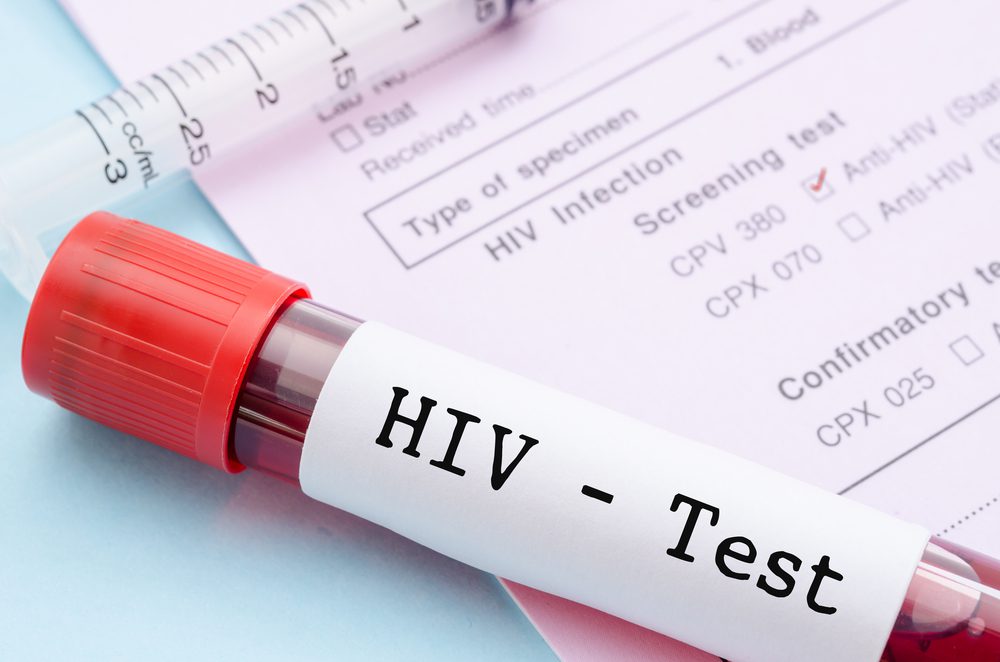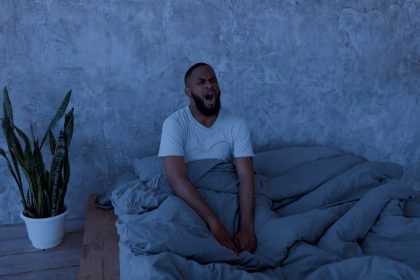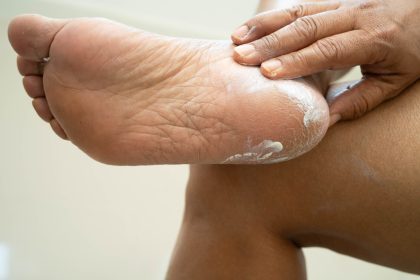When was the last time you gave your feet some dedicated attention? Not just a quick polish change or cramming them into those too-tight shoes, but actual loving care? For most of us, feet fall into the “out of sight, out of mind” category—until they start hurting. But what if those two neglected appendages at the end of your legs are actually wellness powerhouses just waiting to transform your health?
Your feet contain about a quarter of all the bones in your entire body, 33 joints, more than 100 muscles, tendons, and ligaments, and over 200,000 nerve endings. They’re engineering marvels that somehow get relegated to the bottom of our self-care priority list. This neglect isn’t just selling your feet short—it might be undermining your whole-body wellness in ways you never imagined.
Let’s walk through the surprisingly powerful benefits of giving your feet the stretch they’ve been silently begging for.
The full-body pain relief connection nobody talks about
That persistent back pain? Those tight hips? The mysterious knee discomfort? Your untended feet might be the hidden culprits.
Your feet form the foundation of your entire kinetic chain—the interconnected system of muscles, joints, and fascia that creates movement throughout your body. When your feet become tight and immobile from being perpetually cramped in shoes, the effects ripple upward like a wave of tension.
Tight plantar fascia—the connective tissue running along the bottom of your foot—pulls on your Achilles tendon, which tugs on your calf muscles, which affects your hamstrings, which tilts your pelvis, which strains your lower back. This biomechanical domino effect often manifests as pain nowhere near your actual feet.
Regular foot stretching interrupts this cascade by restoring proper mobility at the source. Many people discover that dedicated foot stretching for just a few minutes daily reduces pain they never suspected was foot-related. That mysterious hip discomfort or lower back stiffness that’s persisted despite expensive treatments? It might just respond to some targeted foot love.
The brain-balancing magic in your arches
Your feet aren’t just mechanical structures—they’re sensory powerhouses that significantly impact your nervous system and brain function.
Those 200,000+ nerve endings in your feet make them one of the most neurologically dense parts of your body. They provide your brain with crucial information about your position in space, the surface you’re standing on, and subtle shifts in your balance. This sensory feedback, called proprioception, is vital for coordination, posture, and even cognitive function.
When feet become stiff from underuse or constantly encased in rigid shoes, this sensory feedback system deteriorates. Your brain receives less accurate information, forcing it to work harder for basic movement control. This increased neural effort can manifest as balance problems, coordination issues, mental fatigue, and even anxiety.
Foot stretching and mobilization reawakens these sensory pathways. As your feet become more mobile and receptive, the quality of information flowing to your brain improves. Many people report feeling mentally clearer, more spatially aware, and even emotionally calmer after beginning a foot mobility practice.
The surprising sleep connection in your soles
If you’re among the millions struggling with sleep issues, the solution might be at the very bottom of your body.
Your feet play a crucial role in thermoregulation—your body’s ability to maintain optimal temperature. The skin on your soles contains specialized blood vessels called arteriovenous anastomoses that can release significant heat when dilated. This is why cooling your feet often helps you fall asleep faster than cooling other body parts.
Regular foot stretching improves circulation to and from these specialized vessels, enhancing their effectiveness at temperature regulation. Better foot mobility also reduces nighttime cramping and discomfort that might wake you or prevent deep sleep.
The connection goes deeper through your nervous system. Foot stretching activates parasympathetic nervous system responses—your body’s “rest and digest” mode that counteracts stress and promotes sleep readiness. This explains why many traditional bedtime routines across cultures involve foot soaking, massage, or stretching.
People who incorporate even five minutes of foot mobility work before bed often report falling asleep faster and experiencing fewer nighttime awakenings, without changing anything else about their sleep routine.
The digestive boost you never expected
The connection between your feet and your digestion might seem far-fetched, but it’s grounded in both ancient wisdom and modern understanding of the fascial system—the connective tissue network that runs throughout your body.
Fascia doesn’t just connect adjacent structures—it forms continuous lines that run the entire length of your body. The superficial back line, for example, connects your plantar fascia directly to your scalp in one uninterrupted tissue plane. This means tension in your feet can create restrictions that affect organ function, including your digestive system.
Foot stretching, particularly methods that address the deep fascia, creates a ripple effect of tissue release that improves abdominal mobility and function. Better foot mobility also encourages more movement throughout the day, which itself promotes healthier digestive transit.
From a neurological perspective, foot stretching stimulates parasympathetic activation that enhances digestive function. This explains why practices like reflexology, which targets specific points on the feet, have shown benefits for conditions like constipation and indigestion even when other interventions have failed.
The immunity enhancement through your arches
Your immune system might seem unrelated to your feet, but emerging research on the lymphatic system suggests otherwise.
Your lymphatic system—responsible for immune function, waste removal, and fluid balance—lacks a dedicated pump like your heart. Instead, it relies primarily on muscular movement to push lymph fluid through its vessels. Your feet, with their many small muscles and constant daily movement, serve as important lymphatic pumps.
When feet become immobile, this pumping action diminishes, potentially reducing immune efficiency. Foot stretching that incorporates active movement of the many small foot muscles enhances lymphatic flow, supporting immune function throughout your body.
This connection helps explain why sedentary behavior correlates so strongly with reduced immunity, while even light activity like walking shows immune benefits. Your feet aren’t just carrying you around—they’re actively participating in your body’s defense systems with every step.
People with regularly stretched, mobile feet often report fewer minor illnesses and faster recovery when they do get sick, suggesting this lymphatic pumping effect has real-world benefits beyond theory.
The mood boost hiding in your toes
That mental fog or unexplained irritability might have a surprising connection to your neglected feet.
Your feet contain pressure points that, when stimulated, trigger the release of endorphins—your body’s natural mood elevators. Traditional practices like reflexology and acupressure have long utilized these points to address everything from anxiety to depression.
Modern research confirms these effects, showing that foot-based interventions increase serotonin and dopamine levels while decreasing cortisol, your primary stress hormone. Even simple foot stretching activates many of these same pressure points, creating a subtle but meaningful mood enhancement.
The sensory richness of your feet also creates powerful opportunities for mindfulness practice. The concentrated nerve endings make your feet especially suitable for focused attention, creating a natural entry point to present-moment awareness that can interrupt rumination and worry.
Many people find that adding just five minutes of mindful foot stretching to their morning routine creates a sense of groundedness that persists throughout the day, improving stress resilience and emotional regulation without requiring additional meditation time.
The aging process starts at your foundation
The way your feet age dramatically impacts how the rest of your body ages. Loss of foot mobility often precedes more general physical decline, making foot stretching a powerful intervention for maintaining independence and function as you age.
Research on elderly populations shows that foot problems correlate strongly with fall risk, decreased activity levels, and even cognitive decline as movement becomes more limited. The relationship appears bidirectional—foot problems lead to less movement, which accelerates further physical decline.
Regular foot stretching preserves the mobility, strength, and proprioception necessary for stable walking and balance. This maintained function encourages more daily movement, creating a positive cycle that supports healthy aging throughout all body systems.
Even more compelling, studies examining populations known for longevity find that most continue walking significant distances well into old age, often barefoot or in minimal footwear that preserves foot function. Their mobile, strong feet appear to be both a cause and effect of their overall vitality.
For younger adults, this suggests that foot stretching isn’t just about immediate benefits—it’s an investment in your future mobility and independence. The foot mobility you preserve today may determine your activity capabilities decades from now.
Simple stretches with outsized impact
The good news about foot stretching is that even simple, brief routines yield significant benefits. You don’t need special equipment or extensive time commitments to transform your foot function.
The toe splay is perhaps the most fundamental foot stretch, counteracting the toe compression caused by conventional shoes. Simply spreading your toes as wide as possible, holding briefly, then releasing for 10-15 repetitions reawakens the intrinsic foot muscles and improves toe mobility.
The plantar fascia release addresses the thick band of tissue on your sole that commonly becomes restricted. Rolling your foot over a tennis ball, golf ball, or specialized foot roller for 1-2 minutes per foot breaks up fascial adhesions and improves overall foot mobility.
Toe yoga involves lifting and lowering individual toes while keeping others on the ground—essentially doing finger-like movements with your toes. This neurologically complex activity rebuilds the brain-foot connection that deteriorates from constant shoe-wearing.
Ankle alphabets involve tracing each letter of the alphabet with your big toe while keeping your leg still, creating mobility through all possible ankle movements. This comprehensive approach ensures no movement direction remains restricted.
For maximum benefits, foot stretching works best as a daily habit rather than an occasional treatment. Even 3-5 minutes each day creates more lasting change than longer, infrequent sessions. Many people successfully incorporate these exercises while watching TV, during work breaks, or as part of their morning or bedtime routine.
The unfair advantage of barefoot time
While targeted stretching delivers specific benefits, perhaps the simplest foot intervention is also the most powerful: spending more time barefoot.
Modern footwear, even athletic shoes, typically constrains natural foot function through elevated heels, narrow toe boxes, and rigid soles. These features might protect feet from acute injuries but simultaneously contribute to long-term dysfunction by preventing the natural movements feet evolved to perform.
Regular barefoot time—even just at home—provides natural stretching through varied movement on different surfaces. Each step becomes a mini-mobility session as your foot adapts to the ground beneath it. This natural movement progressively rebuilds foot strength and flexibility without requiring separate exercise time.
The sensory stimulation of different textures and surfaces against bare soles also reawakens neural pathways that enhance balance, coordination, and overall movement quality. Many people report that simply increasing barefoot time improves focus, reduces pain throughout their body, and enhances their overall sense of wellbeing.
For those concerned about support, remember that the human foot evolved with its own perfect support system of arches, muscles, and fascia. When allowed to function naturally through regular stretching and barefoot movement, this internal support often proves far more effective than artificial external support.
Your feet contain nearly a quarter of all the bones in your body for a reason—they’re designed for complex, nuanced movement that supports your entire physical structure. By reclaiming their natural mobility through simple stretching practices, you’re not just addressing your feet—you’re upgrading the foundation of your whole-body wellness.
Those two neglected appendages might just be the most untapped health resource you own. Perhaps it’s time to step up your foot care game and discover what your feet have been trying to tell you all along.

















